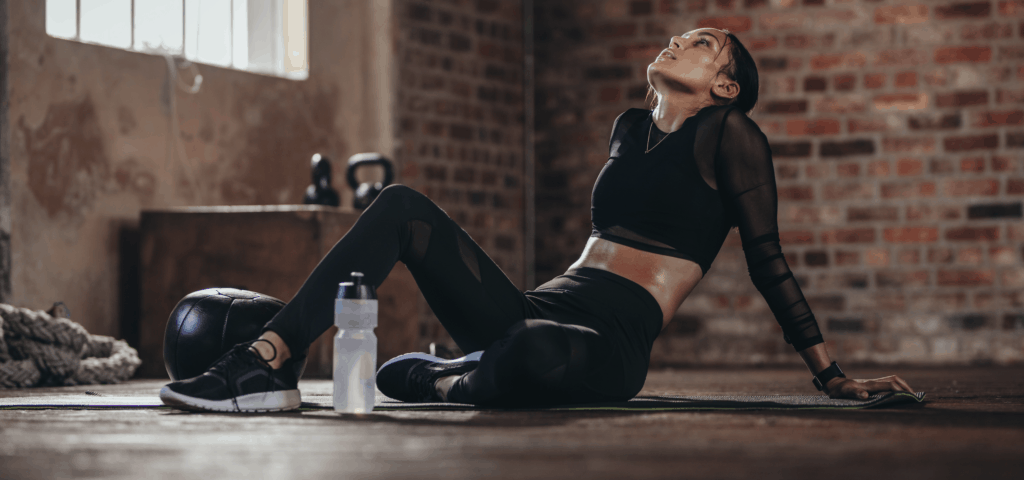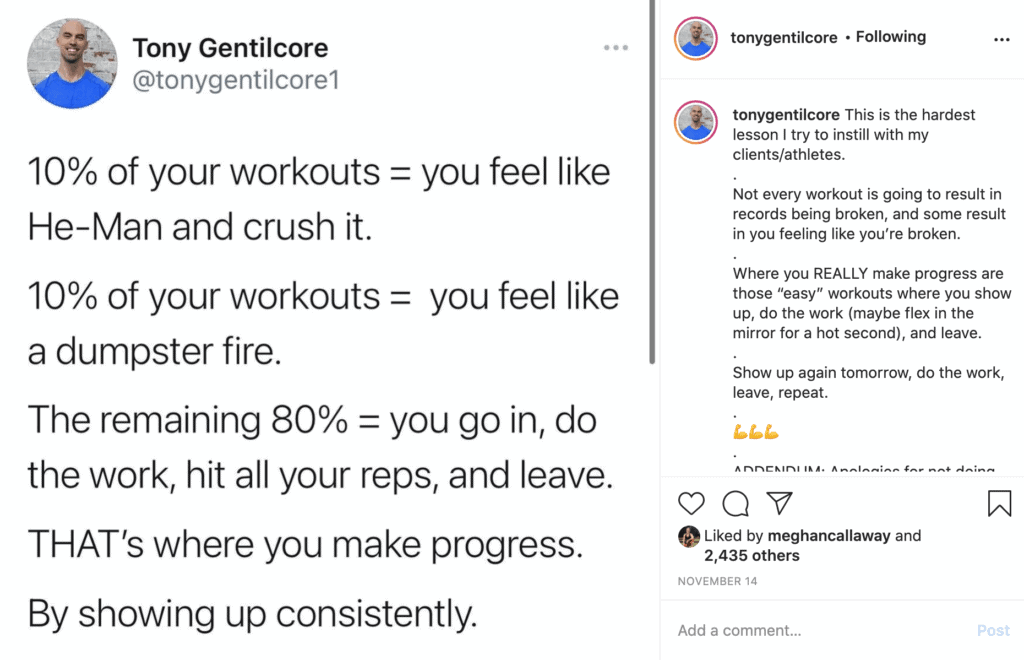Cyclists & triathletes are now strength training as a part of their normal training routine. But should you be sore from your strength training?

Here's why soreness is a sign that you've done TOO MUCH and are most likely slowing your own progress towards your cycling and triathlon goals
“Embracing the discomfort” is something that cyclists and triathletes have been doing since the beginning of time. If you want to become a faster, stronger rider or triathlete, you MUST push your limits, work hard, and push through that burn or discomfort in order to get the stimulation of the energy systems to see improvement.
And if you fail to do so, well, it’s a use it or lose it kinda world, eh?
While this mentality and training approach is a must year round (more on that in another post), it has little to no place in your strength training. In fact, coming to your strength training with this mindset can significantly retard any strength AND in-sport progress.
What Effects Does DOMS Have?
While many endurance athletes seem to crave the super hard, suffer like your lungs are being ripped out efforts, when it comes to strength training having this kind of mentality can seriously derail your progress, and even lead to a loss of training due to injury.
But what many fail to acknowledge beyond injury, is that training in the weight room or in your sport, with residual muscle soreness can have significant and far-reaching negative effects on your performances!
“DOMS can affect athletic performance by causing a reduction in joint range of motion, shock attenuation and peak torque. Alterations in muscle sequencing and recruitment patterns may also occur, causing unaccustomed stress to be placed on muscle ligaments and tendons. These compensatory mechanisms may increase the risk of further injury if a premature return to sport is attempted.”(1)
This means that as you return to strength training with the idea of improving your cycling or triathlon results and abilities, but are creating and then carrying this soreness, you are:
- forcing the body to spend energy repairing excessive damage instead of adapting
- leading to movement pattern changes to avoid pain
- possibly decreasing neural drive to the working muscles due to pain
- changing the forces at the joints (through altered movement patterns)
- changing the energy demands on the body due to altered movement patterns
- changing oxygen demands due to less efficient movement patterns
And many others, but you get the idea.
Pushing too hard in strength training has longer lasting and further reaching effects than going too hard in a single in-sport metabolic session, which by the way, is what you’re primarily doing when you head out for your swim, bike, and runs.
Perhaps then, this is one of the reasons why it seems that many triathletes in particular have such a hard time reaping the benefits of strength training, and instead find themselves continuing on the path of continuing pain and the need for therapeutic interventions and massage (either self massage with foam rollers, lacrosse balls, or massage guns).
Going too hard in the gym drains the resources of the body away from building to improve on the stresses of the tissues and systems to be able to better handle them next time, and far more towards literal damage control.

Instead of Trying to Treat It, Avoid It Through Better Strength Training Programming
We’ve seen an explosion the last 5 years in “recovery technology” aimed at the amateur or hobbyist athlete, especially in the endurance sector:
- $5,000 Compression boots
- Commercial Ice Baths
- Massage Guns
- Compression garments
- Bionic Beats for Recovery
- Meditation Apps
And many, many more oils, lotions, pills, potions, and pieces of equipment said to help you “improve recovery”.
Additionally, there are over 22,000 research articles published since 2016, and 45,000+ all time, looking at DOMS, its causes, and how to aid in recovery from it.
But as the saying goes “An ounce of prevention is worth a pound of cure”.
Yet this thought is completely lost on many coaches and athletes alike.
“Why dial back, when I can just buy these compression boots/dry ice bath/lotion/compression stockings and keep training how I want to train?”
It’s been my experience that the problem we have with DOMS is a cultural one in the endurance communities, as if a workout doesn’t push you to an 8 or 9 out of 10, then it was a waste of time.
But while perhaps you can say this for endurance activities like cycling and triathlon run/bike/swim, (really it’s not like that, but let’s just give you this), for strength training it shouldn’t be like that. As my good friend Tony Gentilcore posted on his instagram a little while ago:

Conclusion
Taking a smarter approach to your strength training for cycling and triathlon specific goals is an absolute must if you want to make the most out of your training time, and to see the returns you’d like from the effort you’re putting in.
Understanding that the effects and adaptation demands differ greatly between your in sport metabolic (interval) workouts and your strength training workouts can have a massive positive impact on how quickly you see returns from your hard work.
If you’d like to learn more about strength training for cycling & triathlon performance, sign up for the HVTraining weekly newsletter to get tips, insights, and even specific exercises to help you along your training journey.
- Cheung, K., Hume, P.A. & Maxwell, L. Delayed Onset Muscle Soreness. Sports Med 33, 145–164 (2003). https://doi.org/10.2165/00007256-200333020-00005






